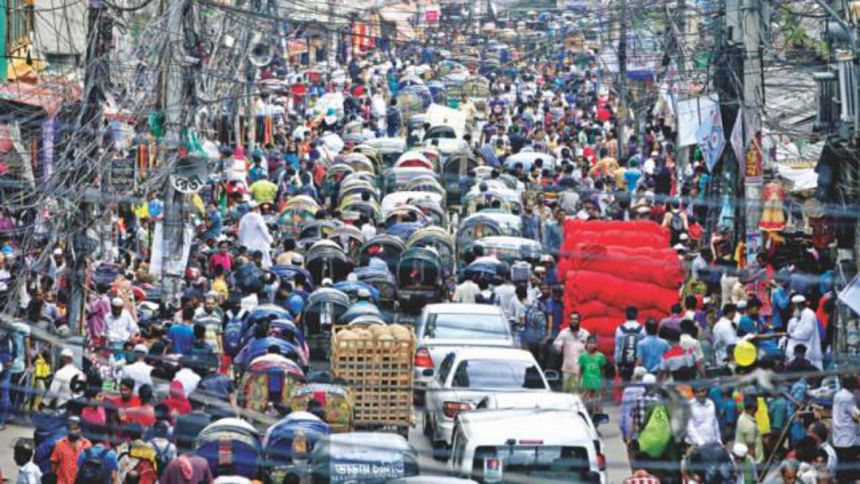Covid-19: Why Bangladesh could be amongst the worst affected during this pandemic

Following the declaration of Covid-19 as a pandemic, the global community has faced the insurmountable task of addressing the rising burden of disease. Since early January, the pattern of Covid-19 has become concerningly familiar. Whilst initial outbreaks appear manageable, nations are given a momentary license to maintain the social and economic status quo. As disease growth becomes exponential, the actions of governments and individuals remain linear. As of February 22, nine cases were reported across Italy. At present, they are confronted with 700 deaths per day, and a health sector on the verge of collapse. The United States and Spain are now facing a similar sequence of events. In the absence of significant preventative measures, any given region is weeks, if not days, from this reality. As of March 30, Bangladesh has 49 confirmed cases and five deaths due to Covid-19. Although these figures may represent significant undertesting, it suggests that we are only at the beginning of an indefinite state of emergency.
To understand the epidemiological burden of an infectious disease outbreak, it is necessary to examine the interplay between the host, pathogen and environment. These factors are often dynamic and subject to variation or external influence. For example, viruses may mutate efficiently enough to produce new strains—an occurrence commonly seen in seasonal influenza. Populations may also develop immunity, either through immunisation or previous infection. The physical environment in which individuals and viruses interact may either accelerate or restrict the rate of transmission. These factors collectively determine the "basic reproduction number" or "R0" of a pathogen. The R0 represents the number of cases that one infected individual is expected to generate within a population at risk. When R0 is more than 1, outbreaks will continue to spread amongst the population. Recent studies have estimated the R0 of Covid-19 to range between 2.4 and 3.3.
Bangladesh remains especially vulnerable to environmental influences on Covid-19 transmission. The capital, Dhaka, currently has the third highest population density in the world. Many individuals are reliant on public transport for commuting within and between cities. Ferries represent particularly high-risk environments, largely due to the physical proximity of passengers and usage of shared facilities over extended periods of time. During the initial stages of this pandemic, the Diamond Princess cruise ship became an epicentre for Covid-19, resulting in more than 800 cases amongst its 3,700 passengers. Residential environments represent another high-risk population. Around 3 million individuals currently reside within impoverished urban settlements and slums throughout Dhaka. Living conditions are often typified by dense habitation and compromised access to water and sanitation facilities. Observational studies in such settings have shown significantly higher rates of infectious respiratory diseases such as tuberculosis. Through widespread testing of Covid-19, South Korea has identified that individuals between 20-39 years confer higher rates of asymptomatic infection. Although not unique to Bangladesh, elderly residents remain especially vulnerable if preventative measures are not taken within intergenerational households. This pattern of disease transmission has likely contributed towards the overall disease burden in Italy.
Bangladesh has few protective factors in the context of disease transmission. This is compounded by the possibility of widespread morbidity and mortality. Reported case-fatality rates of Covid-19 have varied significantly between countries. This variation is largely explained by the rate of testing, population risk factors and access to healthcare. With further availability of testing, many experts agree that the true case-fatality rate is closer to 1 percent. Mortality risk factors within a population can be expressed as both modifiable and non-modifiable. For example, Italy's relatively higher case-fatality rate is partly explained by its ageing population—the second highest in the world. When considering modifiable risk factors for Covid-19 mortality, Bangladesh is left in a precarious position. A recent study published in the Lancet revealed the most common comorbidities associated with mortality in Covid-19 were hypertension, chronic obstructive lung disease, diabetes and coronary heart disease. The prevalence estimates for these conditions in Bangladesh are 24.7 percent for hypertension, 12.5 percent for chronic obstructive lung disease, 7.4 percent for diabetes and 5 percent for coronary heart disease. Moreover, individuals affected by multiple comorbidities are subject to a greater mortality risk within the population.
The US Centers for Disease Control and Prevention (CDC) have reported that an estimated 14.3 percent of those affected in the 20-44 age group have required hospitalisation. A further 2 percent within this distribution have required Intensive Care Unit (ICU) support. Italy currently has 12.5 ICU beds per 100,000 people—the third highest rate in the world. Despite this, the provision of ICU services has been largely disproportionate to demand. Consequently, challenging ethical decisions around which individuals should receive critical care have frequently needed to be taken. Many individuals who would have otherwise received such interventions have missed out due to limited resources. Bangladesh faces this pandemic with significantly less resources than many of these countries. Once ICU capacity is exhausted, there is a significant risk that the rate of hospitalisation and mortality will share a similar magnitude.
At present, lockdown measures have taken place throughout the country. Without a vaccine, physical distancing and hygiene precautions are the only viable means of reducing the burden of disease. During the peak of the outbreak in Wuhan, China, aggressive lockdown measures resulted in the R0 falling to an estimated 0.32. For many citizens, this is likely to result in loss of income and food insecurity. Whilst governments have a duty to provide a safety net for the welfare of those affected, there is a moral imperative for society to share this responsibility. Moreover, these actions extend towards matters of health literacy, as many vulnerable individuals may find themselves without the knowledge required to prevent disease transmission. Individual actions will form the cornerstone of the response to this pandemic. Non-compliance with these measures may result in severe medical, social and economic consequences for society. As many other countries are discovering, every action we take today is worth a thousand tomorrow.
Dr Mohammad Raiyan Khan is a medical officer based in Sydney, Australia. He is currently an MPhil in Public Health candidate at the University of Cambridge. E-mail: [email protected]

 For all latest news, follow The Daily Star's Google News channel.
For all latest news, follow The Daily Star's Google News channel. 



Comments